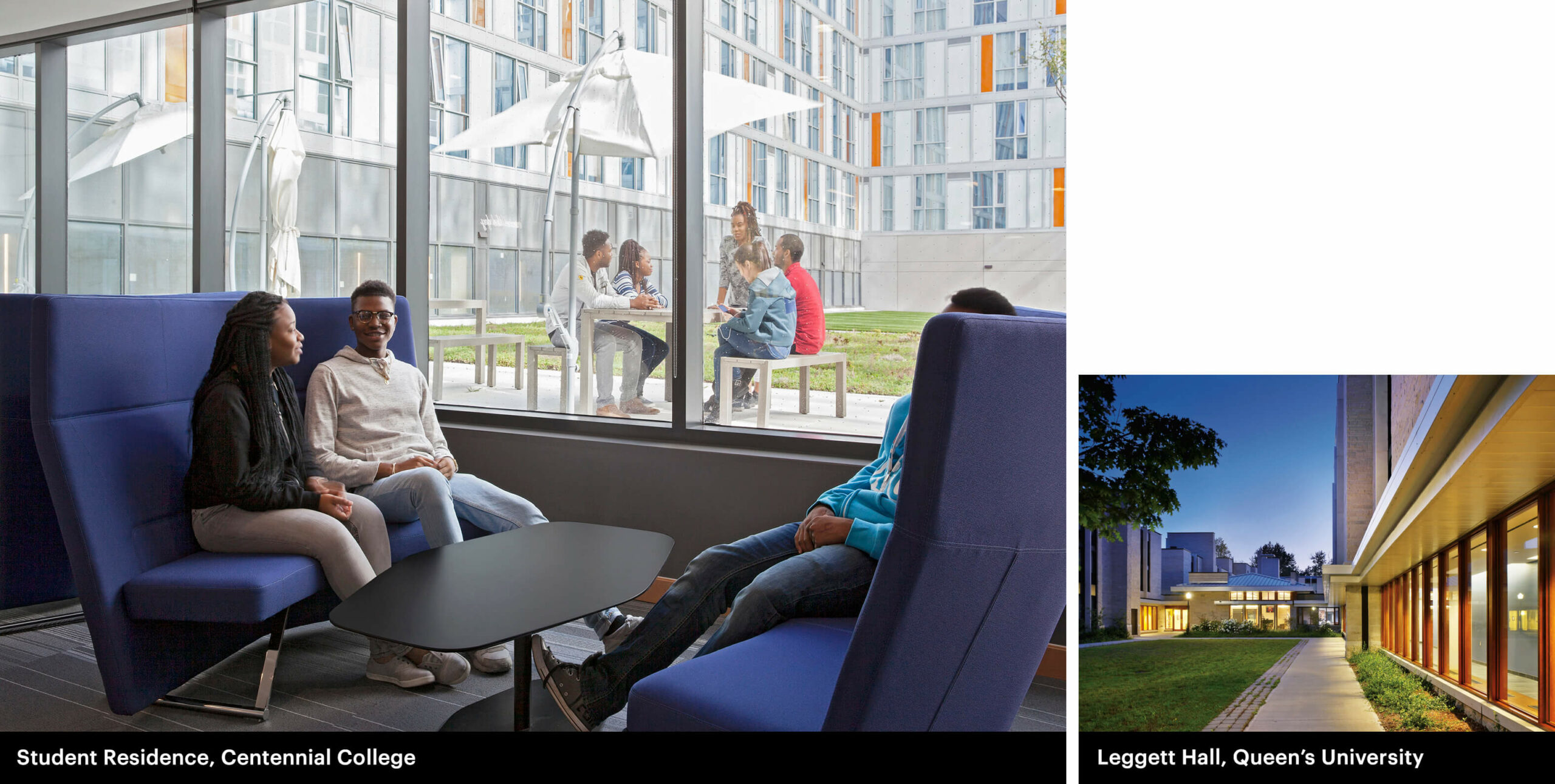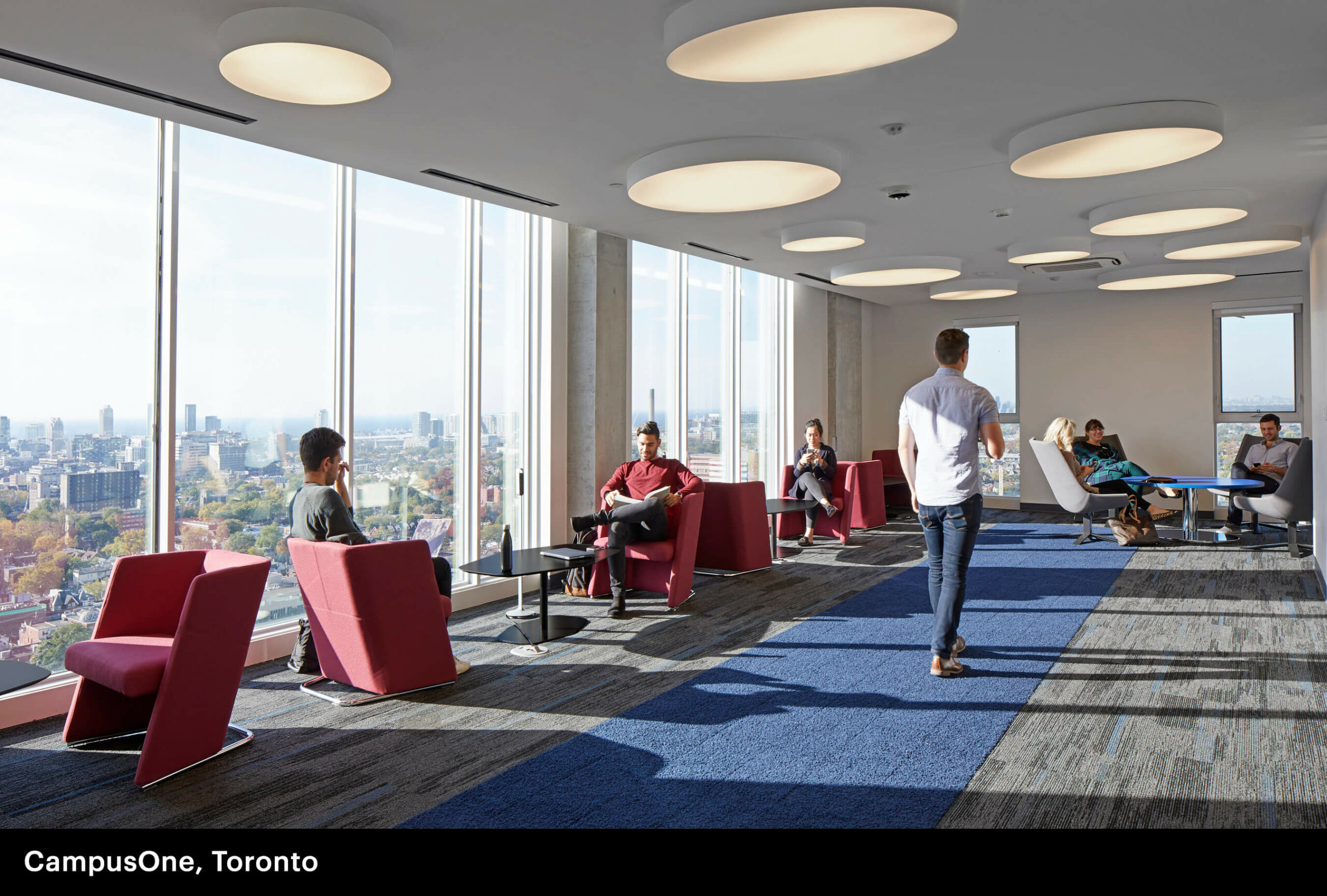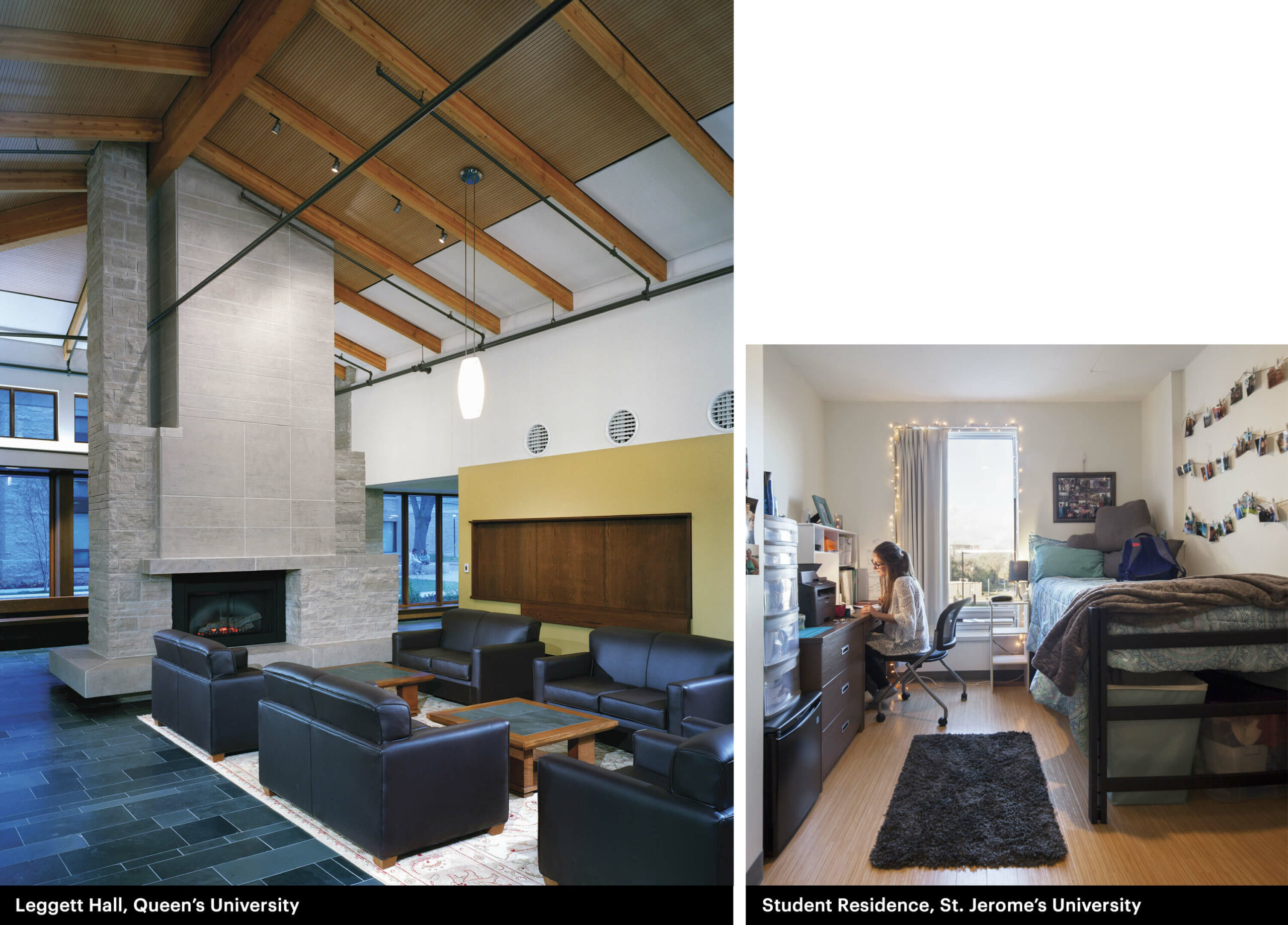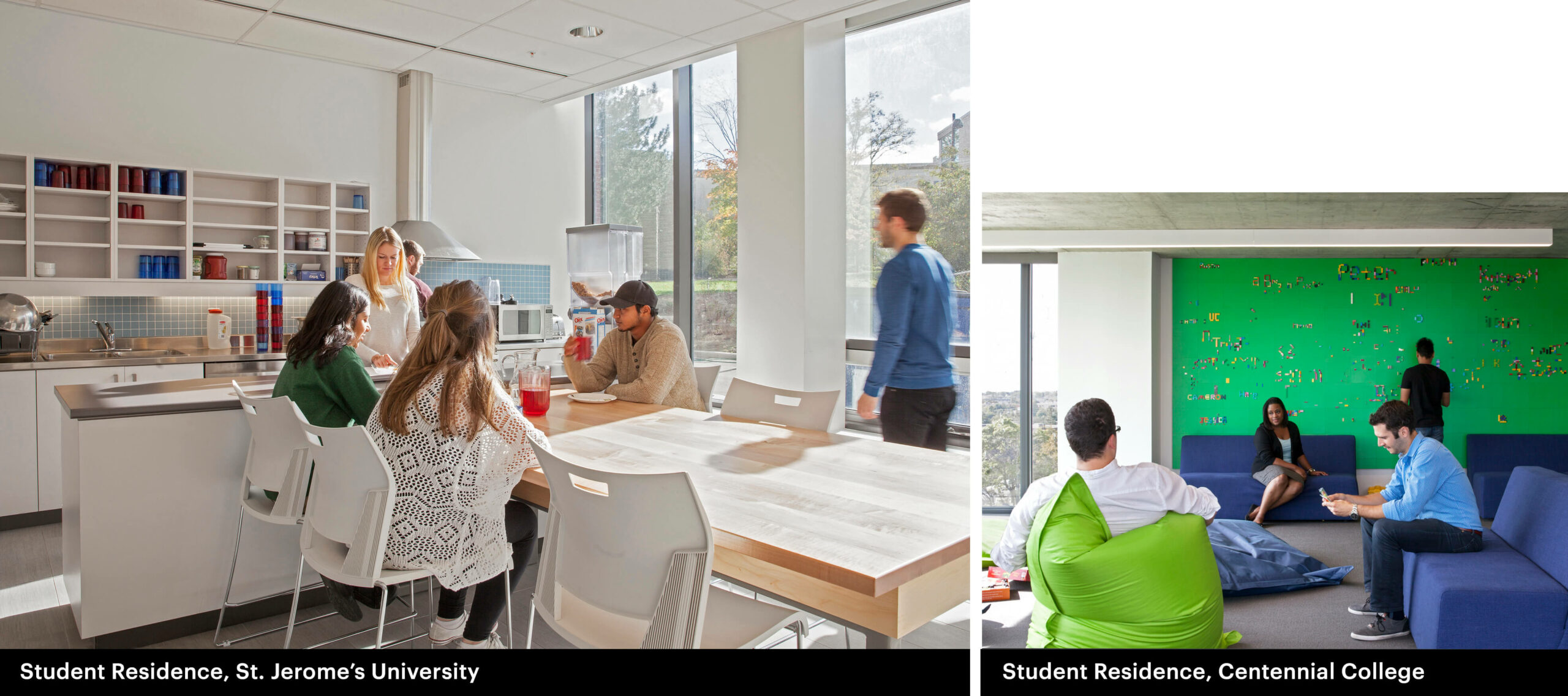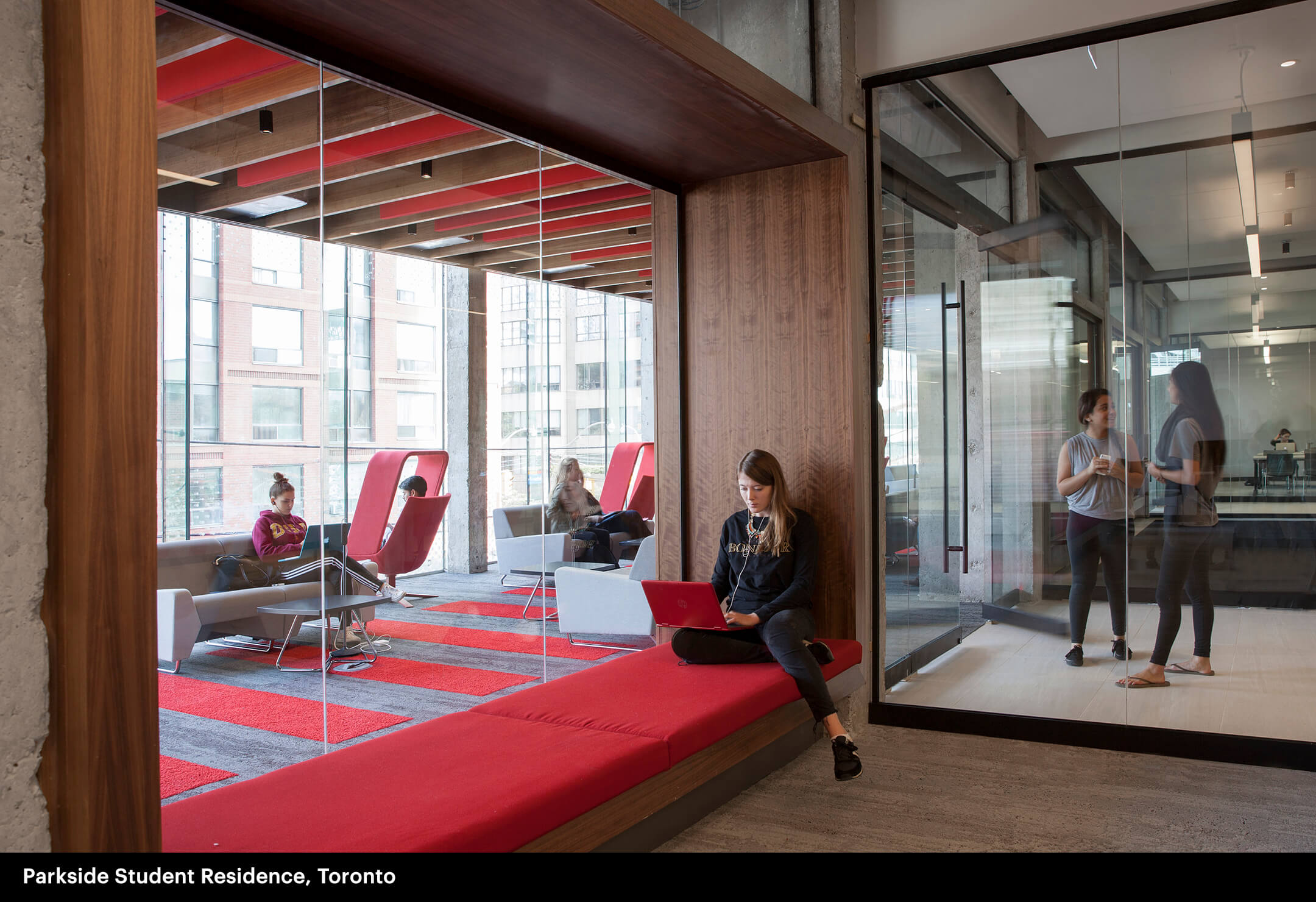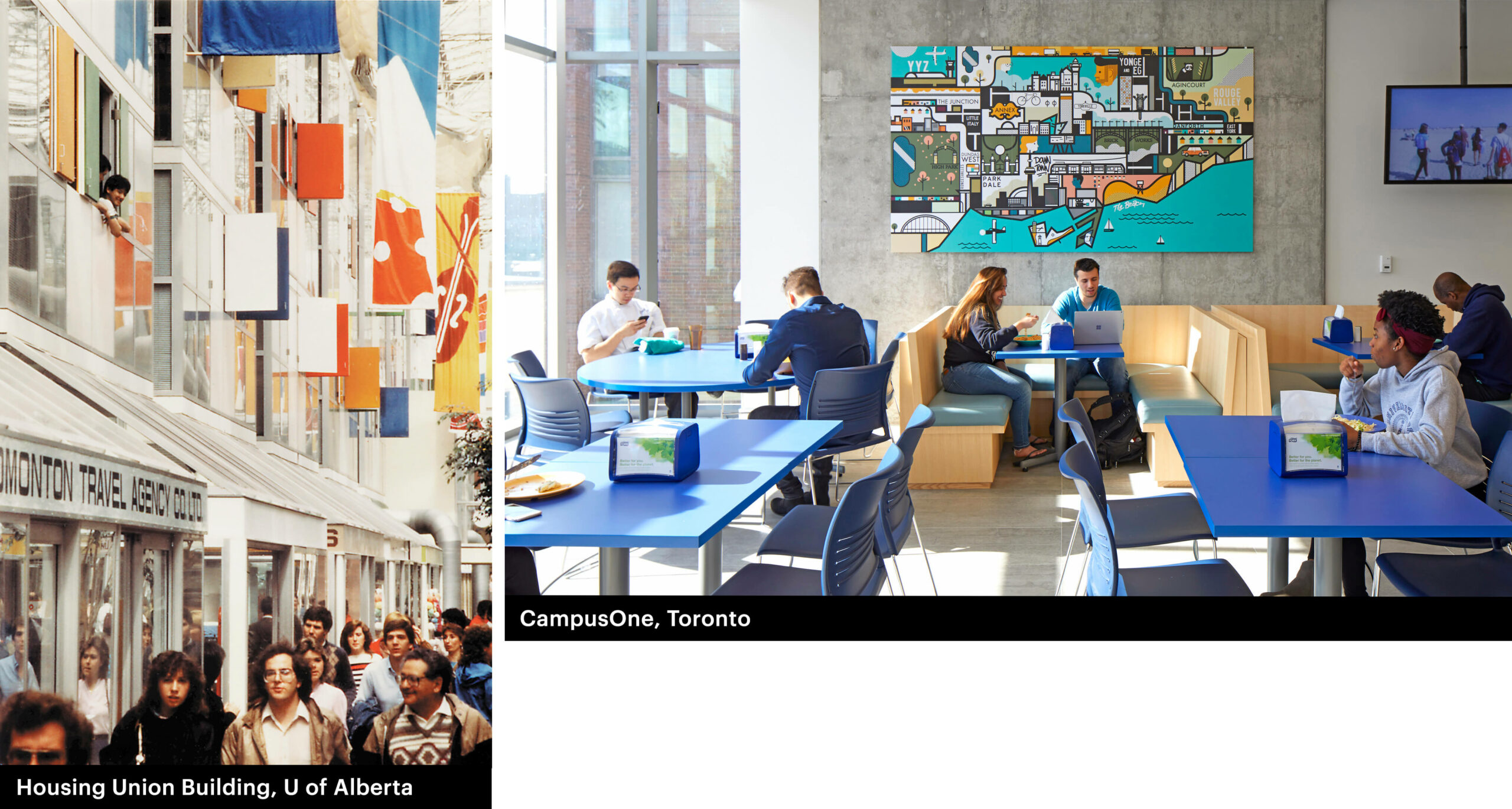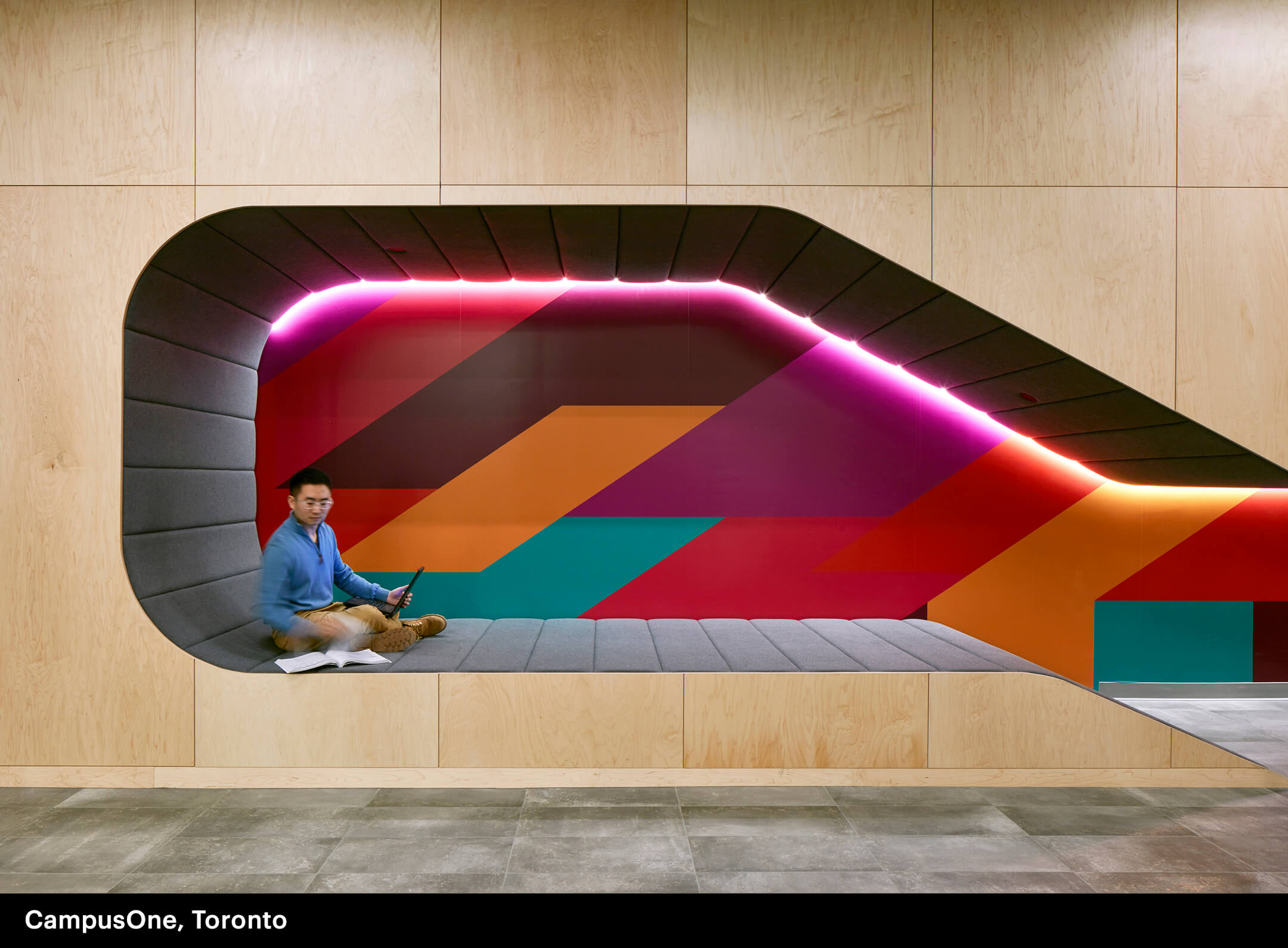Supporting Student Mental Health Through Design
By Gary Watson
May 10, 2022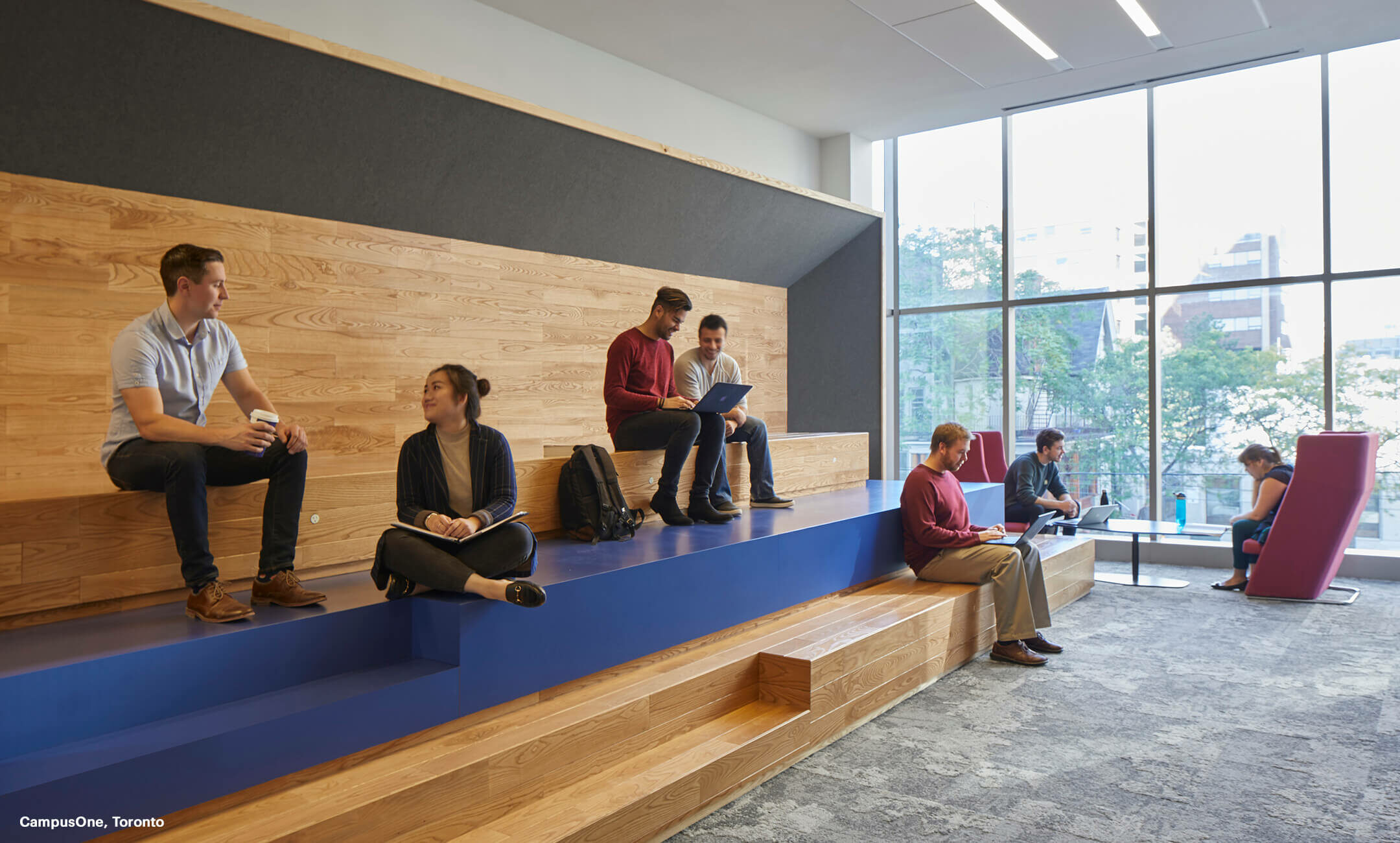
Over the past 20 years at Diamond Schmitt, Senior Associate Gary Watson has worked on multiple student residence projects, including Toronto’s Parkside Student Residence, Montreal’s Campus1 MTL, Humber College’s North and Lakeshore Student Residences, and Queen’s University Residences. He is currently working on McMaster University’s Undergraduate Student Residence. During this time, Gary has honed into the design principles of safety, inclusivity, and comfort, to meet the physical and mental health needs of students today.
The North American culture of over-achievement and perfectionism is rapidly taking a toll on young people and students, especially on their mental health. Universities and colleges are reporting that the number of mental health disabilities has doubled over the last five years. According to Ontario Universities, 65% of post secondary students reported overwhelming anxiety in 2016. The Mayo Clinic notes that suicide is the third leading cause of death for college students.
Although a single factor cannot address mental health, architecture can inform and improve the environment and experience for students. Primarily the planning of buildings should be designed to support and reinforce the sense of belonging and community. Design elements such as access to daylight and nature; exterior environments; provision of social spaces; circulation that reduces isolation; and a positive identity of the residence, including colours and graphics; can also influence mental well-being.
The student residence typology is changing. The traditional dormitory style of living is transforming into an all-encompassing student experience. This ‘Living and Learning’ model integrates residency with many other aspects of student life, including study, nourishment, exercise, and social activities. Interaction with peers and readily available support can help students start their academic journey on the right foot. The net result is a happy, better-balanced community of peers that support each other with documented improvement in academic performance.
Access to Daylight and Nature
A student environment considered around ample access to daylight and outdoors is a reminder of calming and balance. Connecting with nature improves our physical, mental, and spiritual well-being and can facilitate concentration.
Social Spaces
Amenity spaces to socialize, eat, study and exercise are key elements to a positive student residence experience. One of the most critical components living in these buildings is how the spaces relate to each other. A variety of transparent spaces provides an environment where students can feel safe – if they can see others, they are not alone. If an individual quiet study space is preferred, it is available while being in proximity to peers. Social spaces are most successful when they offer a variety of experiences, providing the student with options depending on what they want to do or how they want to interact with others.
Building Identity
Bright and colourful spaces with bold graphics provide a strong identity and sense of place that invite students to call their own.
Typically, the student’s first experience of a college or university is the residence. It is their home away from home. An environment designed to support positive mental well-being through comfort, light, safety, spaces for social interaction and most importantly a sense of belonging is critical to the success of both students and institutions.
Find resources for youth and adults across Canada in need of mental health support here.
